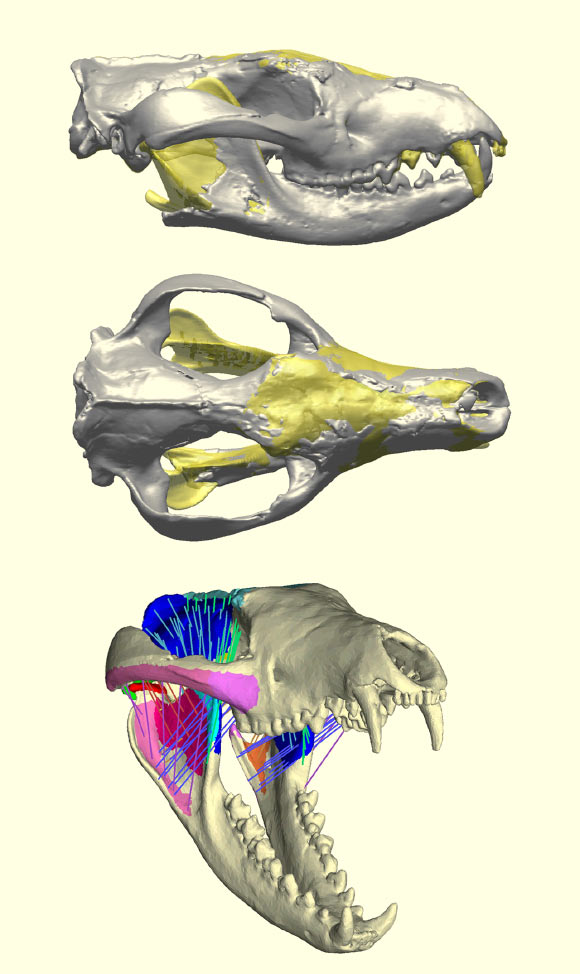Nimbacinus dicksoni, an ancient meat-eating marsupial that lived in Australia during Oligocene and Miocene between 24 and 5.3 million years ago, had the ability to hunt vertebrate prey exceeding its own size.

Nimbacinus dicksoni. Image credit: Anne Musser. Background: Hopetoun Falls in Victoria, Australia. Image credit: David Iliff / CC-BY-SA 3.0.
Commonly known as the Dickson’s thylacine, Nimbacinus dicksoni was a 50-cm-long fox-sized thylacine and a distant relative of the famous Tasmanian tiger (Thylacinus cynocephalus).
Paleontologists have recently discovered a 16 to 11-million-year-old skull of Nimbacinus dicksoni at the Riversleigh World Heritage fossil site in northwestern Queensland, Australia.
They used the fossil to determine if this marsupial was more likely to hunt small or large prey.
The scientists applied virtual 3D reconstruction techniques and computer modeling to reconstruct the skull, digitally ‘crash-testing’ and comparing it to models of large living marsupial carnivores – Tasmanian devil, spotted-tailed quoll and northern quoll, and to the recently extinct Tasmanian tiger.
They found that the similarity in mechanical performance of the skull between Nimbacinus dicksoni and the largest quoll, the spotted-tailed quoll, was greater than the similarity to the Tasmanian tiger.
The authors suggest that Nimbacinus dicksoni had a high bite force for its size and was likely capable of hunting vertebrate prey that exceeded its own body mass.
“Our findings suggest that Nimbacinus dicksoni was an opportunistic hunter, with potential prey including birds, frogs, lizards and snakes, as well as a wide range of marsupials,” said Dr Marie Attard from the University of New England, who is the first author of a paper published in the journal PLoS ONE.
“In contrast, the iconic Tasmanian tiger was considerably more specialized than large living dasyurids and Nimbacinus, and was likely more restricted in the range of prey it could hunt, making it more vulnerable to extinction.”
______
Attard MRG et al. 2014. Virtual Reconstruction and Prey Size Preference in the Mid Cenozoic Thylacinid, Nimbacinus dicksoni (Thylacinidae, Marsupialia). PLoS ONE 9(4): e93088; doi: 10.1371/journal.pone.0093088








